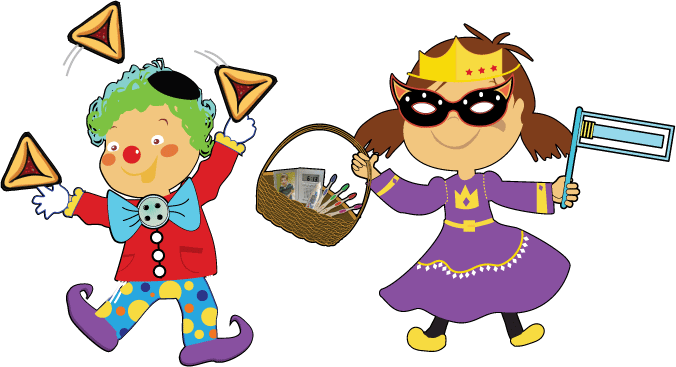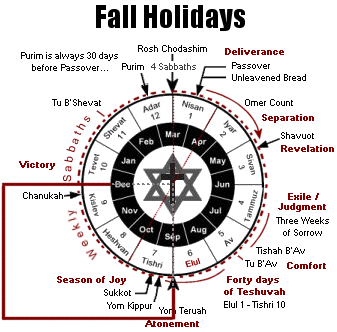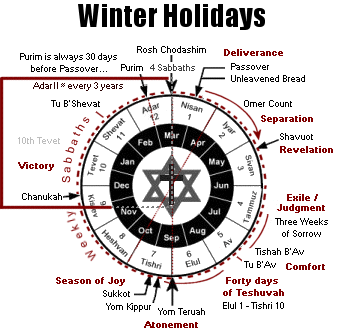
Saints, Feast, Family
- Traditions passed down with Cooking, Crafting, & Caring -
February 28- March 1
Saint of the day:
Saint Esther
Purim Jewish Holiday
Queen Esther saves her people (Old Testament Story)


The Story of Saint Esther & Purim
Purim is celebrated with a public reading—usually in the synagogue— the Book of Esther (M'gillat Esther), which tells the story of the holiday. Under the rule of King Ahashverosh, Haman, the king's prime minister, plots to exterminate all of the Jews in Persia. His plan was foiled by Queen Esther and her cousin Mordechai, who ultimately saves the Jews of Persia from destruction. The reading of the m'gillah typically is a rowdy affair, punctuated by booing and noise-making when Haman's name is read aloud.
Purim is an unusual holiday in many respects. First, Esther is the only biblical book in which God is not mentioned. Second, Purim, like Hanukkah, traditionally is viewed as a minor festival, but elevated to a major holiday as a result of the Jewish historical experience. Over the centuries, Haman became the embodiment of every anti-Semite in every land where Jews were oppressed. The significance of Purim lies not so much in how it began, but in what it has become: a thankful and joyous affirmation of Jewish survival against all odds.
https://reformjudaism.org/recipe-search?keyword=purim&f[0]=im_field_tags%3A354
https://en.wikipedia.org/wiki/Purim

Visit:
Tomb of Esther and Mordechai
The Tomb of Esther and Mordechai (Persian: بقعه استر و مردخای) is located in Hamadan, Iran. Believed by some to house the remains of the biblical Queen Esther and her uncle Mordechai, it is the most important pilgrimage site for Jews in the country.




History:
Purim: History
The story of Purim is found in the Book of Esther, one of the books in the Ketuvim (Writings) section of the Bible. It is set in the land of Persia (current day Iran) at the time when Ahashverosh was king. King Ahashverosh held a banquet in the capital city of Shushan and ordered his queen, Vashti, to come and dance before his guests.
She refused to appear and lost her royal position.
Acting on advice from his counselors, Ahashverosh held a pageant to choose a new queen. Mordechai, a Jewish man living in Shushan, encouraged his cousin, Esther, to enter the competition. Esther won but, following the advice of her cousin, did not reveal her Jewish origin to the king.
Mordechai often sat near the gate of the king's palace. One day he overheard two men, Bigthan and Teresh, plotting to kill the king. Mordechai reported what he had heard to Esther. She then reported the information to the king. The matter was investigated and found to be true, and Bigthan and Teresh came to an unfortunate end. Mordechai's deed was recorded in the king’s diary.
Meanwhile, the king's evil adviser, Haman, paraded through the streets, demanding that all bow down to him. Because Jews do not bow to anyone but God, Mordechai refused to bow down to Haman. Upon learning that Mordechai was Jewish, Haman decided to kill all the Jews in the Persian empire. He plotted to kill them—convincing King Ahashverosh to go along with the plan—and cast purim("lots," plural of pur), a kind of lottery, to determine the day on which he would carry out his evil deed: the 13th of Adar.
However, Mordechai alerted Esther to Haman's evil plot, and Esther, in turn, revealed her Jewish identity to the King, convincing him to save the Jews and foiling Haman's plot. Haman was hanged, Mordechai received his estates and the position of royal vizier, and the Jews of Persia celebrated their narrow escape on the 14th of Adar, the day after they were supposed to be annihilated.
Thus, the fate Haman had planned for the Jews became his own. The holiday of Purim celebrates the bravery of Esther and Mordechai and the deliverance of the Jewish people from the cruelty of oppression.
Although Purim is observed in most places on the 14th of Adar, in Jerusalem, it is celebrated on the 15th. M’gillat Esther explains, “on the thirteenth day of the twelfth month—that is the month of Adar—when the king’s command and decree were to be executed, the very day on which the enemies of the Jews intended to have rule over them, the opposite happened, and the Jews prevailed over their adversaries.” The Jews fought and won on the 13th of Adar and celebrated the following day. However, M’gillat Esther continues by explaining that the Jews did not defeat their enemies until the 14th of Adar in the walled city of Shushan. Therefore, cities that were enclosed during the time of Joshua do not celebrate until the 15th of Adar, which has been appropriately named Shushan Purim. Because of the significance of Jerusalem, Purim is celebrated on Shushan Purim.
Source: The Jewish Home (Revised Edition) by Daniel B. Syme



Purim: Customs and Rituals
In the Book of Esther, we read that Purim is a time for "feasting and merrymaking," as well as for "sending gifts to one another and presents to the poor" (Esther 9:22). In addition to reading the M'gillah (Book of Esther), celebrants dress in costumes, have festive parties, perform "Purim-spiels," silly theatrical adaptations of the story of the M'gillah, send baskets of food (mishloach manot) to friends, and give gifts to the poor (matanot l'evyonim).
Hamantaschen
Hamantaschen (Yiddish for Haman's pockets) are three-cornered pastries filled with poppy seeds (mohn in Yiddish), fruit preserves, chocolate, or other ingredients that are traditionally eaten on Purim. In Israel during the weeks leading up to Purim, the aroma of freshly baked hamantaschen can be smelled on every block. Their triangular shape is thought to be be reminiscent of Haman's hat or ears.
Costumes
As part of the carnival-like atmosphere of Purim, many children and adults wear costumes. Some attribute this tradition to the fact that Esther initially “masked” her Jewish identity. Now a vibrant and widely practiced custom, some choose to dress as characters from the Purim story, while others select Jewish heroes from throughout history.
In Israel, the celebrations are especially extravagant and exciting. People of all ages take to the streets, rejoicing with parades, parties, costumes and carnivals. The parade through the streets of Tel Aviv is known to be especially wild.
In the Synagogue
The M'gillah (scroll) most often refers to M'gillat Esther (The Scroll of Esther) which also is known as the "Book of Esther." According to the Talmud, "The study of Torah is interrupted for the reading of the M'gillah." Maimonides, a 12th century sage and rabbi, teaches, "The reading of the M'gillah certainly supersedes all other mitzvot."
Traditionally, the Book of Esther is read at both evening and morning services on Purim—both in North America and in Israel. A number of customs are associated with the reading. Haman, the enemy of the Jews in this story, is associated with all those who have tried to destroy the Jewish people throughout history. Therefore, we make loud noises—verbally or with noisemakers—at every mention of Haman’s name in order to drown it out. Derived from the Polish word meaning “rattle,” a grogger is the noisemaker used to drown out the name of Haman during the reading of the M'gillah. Beginning in the 13th century, Jews throughout Europe sounded the grogger as a part of their Purim celebrations.
A Purimspiel (pronounced shpeel, rhymes with "reel") is a humorous skit presented on Purim. Most parody the story of the Book of Esther, but it also is common for participants to take the opportunity to poke some gentle fun at themselves and their idiosyncrasies.
At Home
Mishloach manot are gifts of food that friends (and prospective new friends!) exchange on Purim. Often presented in baskets, most mishloach manot include hamantaschen, the traditional three-sided pastry eaten on Purim, but may also include a wide variety of foods and treats. These gifts are frequently referred to by their Yiddish name, shalachmanos.
Jewish families make mishloach manot baskets at home and distribute then to friends. Many families also make hamantaschen to include in these baskets and to enjoy at home.
Matanot l'evyonim (gifts to the poor) are gifts given at this season to those in need so that they, too, can celebrate Purim with a special meal. Many families have committed to participating in this important social justice aspect of the holiday.
Source:



Movies:
There are a few movies that can be viewed about Queen Esther.
I remember as a child in sunday school that Queen Esther & Ruth were two of my favorite female stories to hear.
Jewish & Christian people love her story.


Calendar:





Recipe:
Hamantaschen Cookies
Ingredients
-
½ cup butter (or margarine)
-
¾ cup granulated sugar
-
1 egg
-
1 Tbsp milk (or almond milk)
-
1 tsp vanilla extract
-
1 tsp grated lemon zest
-
1 ¼ cups all purpose flour
-
¼ tsp baking powder
-
¼ tsp salt
-
Jam of choice for filling
Directions:
-
Beat the butter and sugar together until smooth. Add egg, milk, vanilla and lemon zest until mixed thoroughly.
-
Sift together the flour, baking powder and salt. Add dry mixture to wet mixture until incorporated.
-
Note: if the dough is too soft, increase flour amount by ½ cupfuls until firm.
-
Chill dough for at least 1 hour or up to 24 hours.
-
Dust surface with powdered sugar to keep from sticking. Roll the dough to about ¼ inch thick.
-
Using a round cookie cutter, cut out and place onto cookie sheet.
To keep the dough from sticking to your cutter, dip in powdered sugar before each cut! -
Fill each round with your favorite filling, and using your favorite method, pinch corners together tightly.
-
Bake at 400° for about 7-9 minutes.
Meat-filled kreplach in a clear soup
Ingredients
-
FOR THE DOUGH
-
3 large eggs
-
1/4 teaspoon kosher salt
-
1 1/2 to 2 cups flour (9 to 12 ounces),
plus more for the work surface or as needed -
Water (optional)
For the Filling
-
2 tablespoons vegetable oil
-
1 large onion, cut into small dice
-
1 pound chicken livers, sinew and fat trimmed
-
1/4 teaspoon kosher salt, plus more as needed
-
1/4 teaspoon freshly ground black pepper
-
1/4 teaspoon ground cumin
For the Soup
-
8 cups no-salt-added, clear chicken broth, preferably homemade
-
Chopped flat-leaf parsley, for garnish


Directions:
-
For the dough: To make it by hand, lightly beat the eggs with salt in a mixing bowl. Add 1 1/2 cups flour gradually, working it in first with a fork and then with your hands, until it is well incorporated and the mass holds together, adding some or all of the remaining flour as needed. To make the dough in a food processor, combine the eggs, salt and 1 1/2 cups of the flour in the processor bowl. Pulse to form a dough that holds together, adding some or all of the remaining flour as needed.
-
Lightly flour a work surface. Turn the dough out onto the surface, kneading for 10 to 15 minutes, until the dough is smooth and elastic, adding a bit more flour if it is too sticky or a few drops of water if it is too dry. Wrap the dough in plastic wrap; let it rest for 15 to 30 minutes at room temperature.
-
Divide the dough into 2 balls of equal size. Flour a rolling pin, then use it to roll out each ball as thin as possible into a rectangle shape. (Alternatively, the dough can be rolled thin with a pasta machine.) Pull and stretch the dough as needed until it is uniformly almost paper-thin, without breaking it. You’ll need to use half of the dough right away (while it is pliable) for this recipe; reserve the rest by first cutting it into noodles, dusting them lightly with flour, then refrigerating or freezing (see headnote).
-
Cut the stretched, thin dough into twenty to twenty-two 2 1/2-inch squares. To do that, you can fold the sheet of dough in half, then cut enough 2 1/2-inch-wide strips to yield the total number of squares (20 to 22). Then unfold the strips to cut the squares. (Scraps can be rolled out into a ball and rolled out again.)
-
For the filling: Heat the oil in a large nonstick skillet over medium-low heat. Add the onion, stirring to coat; cook for 20 to 30 minutes, stirring occasionally, until the onion is lightly caramelized.
-
Clear a space at the center of the pan and add the chicken livers. Season them with the salt, pepper and cumin. Increase the heat to medium; cook on each side for a few minutes, until lightly browned; they will not be cooked through.
-
Transfer half of the mixture to a food processor to cool; meanwhile, cook the remaining chicken livers until just done throughout. Remove from the heat to cool.
-
Pulse the onion-chicken liver mixture (in the food processor) until smooth; transfer to a medium bowl. This will be the filling for the kreplach.
-
Transfer the remaining, cooled mixture (from the pan) to the food processor; pulse until fairly smooth. Taste, and season with salt as needed.
-
When ready to assemble and cook the kreplach, bring a large pot of salted water to a boil over medium-high heat. Line a baking sheet with parchment paper.
-
Place 1/2 to 1 teaspoon of the filling at the center of each dough square. Fold the pasta over on the diagonal to form a triangle. Pinch the edges together to seal tightly. Bring the two longer points of the triangle together to form a ring, pressing so they stick together. (You might have filling left over; it can be cooked further and added to the remaining half-batch.)
-
(At this point, the kreplach can be frozen for up to 6 months in an airtight container, with parchment paper between each layer.)
-
Working in 4 or 5 batches, drop the kreplach into the boiling water; cook, uncovered, for 3 or 4 minutes; they will float to the top. (They are cooked separately from the soup to keep the broth from becoming cloudy.)
-
Meanwhile, heat the chicken broth in a large saucepan over medium heat.
-
As the kreplach are done, use a slotted spoon to transfer them to the broth. Once they're all in, turn off the heat. Taste, and season lightly with salt as needed.
-
Ladle soup and at least 4 kreplach into each wide, shallow bowl. Sprinkle with the parsley; serve hot.